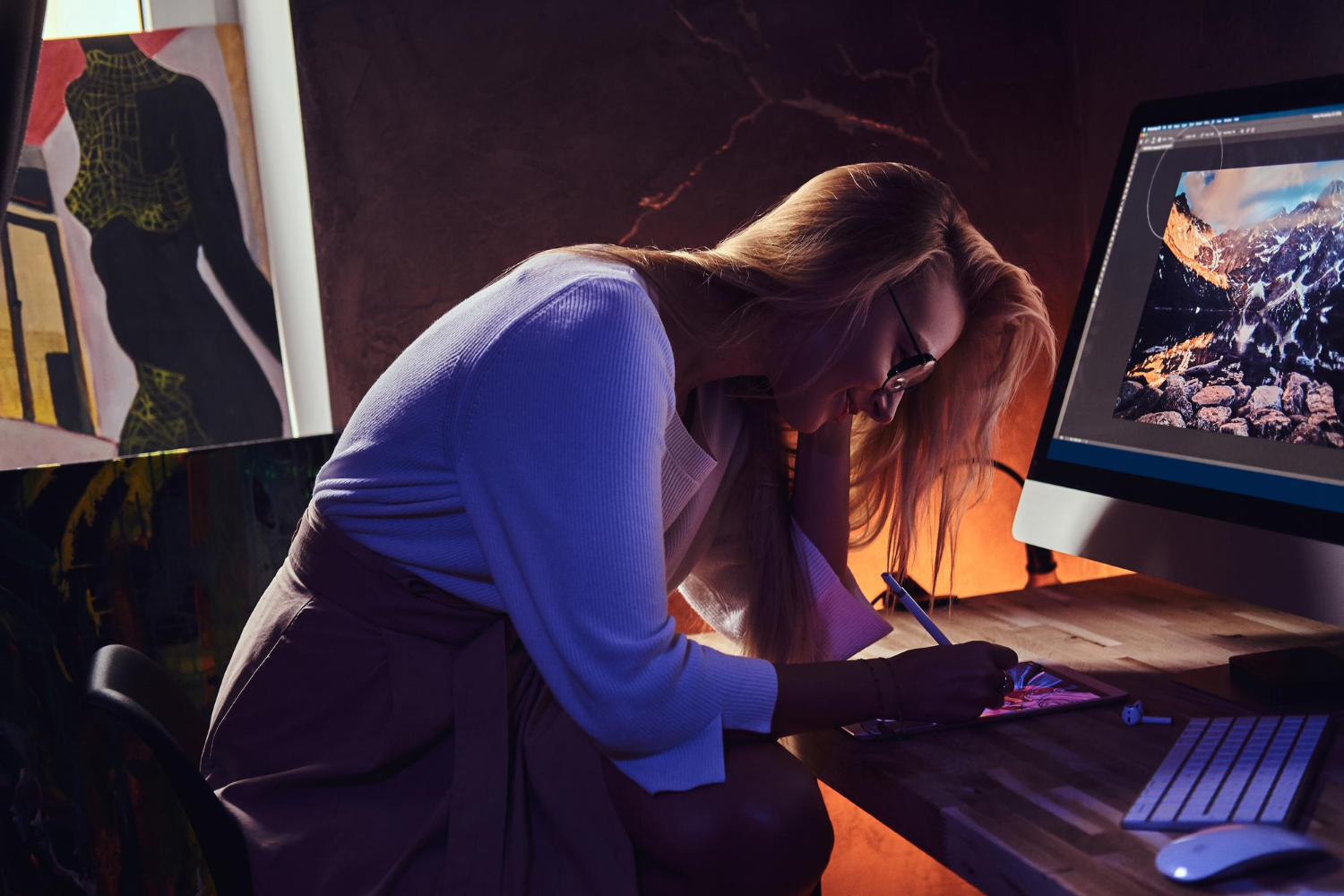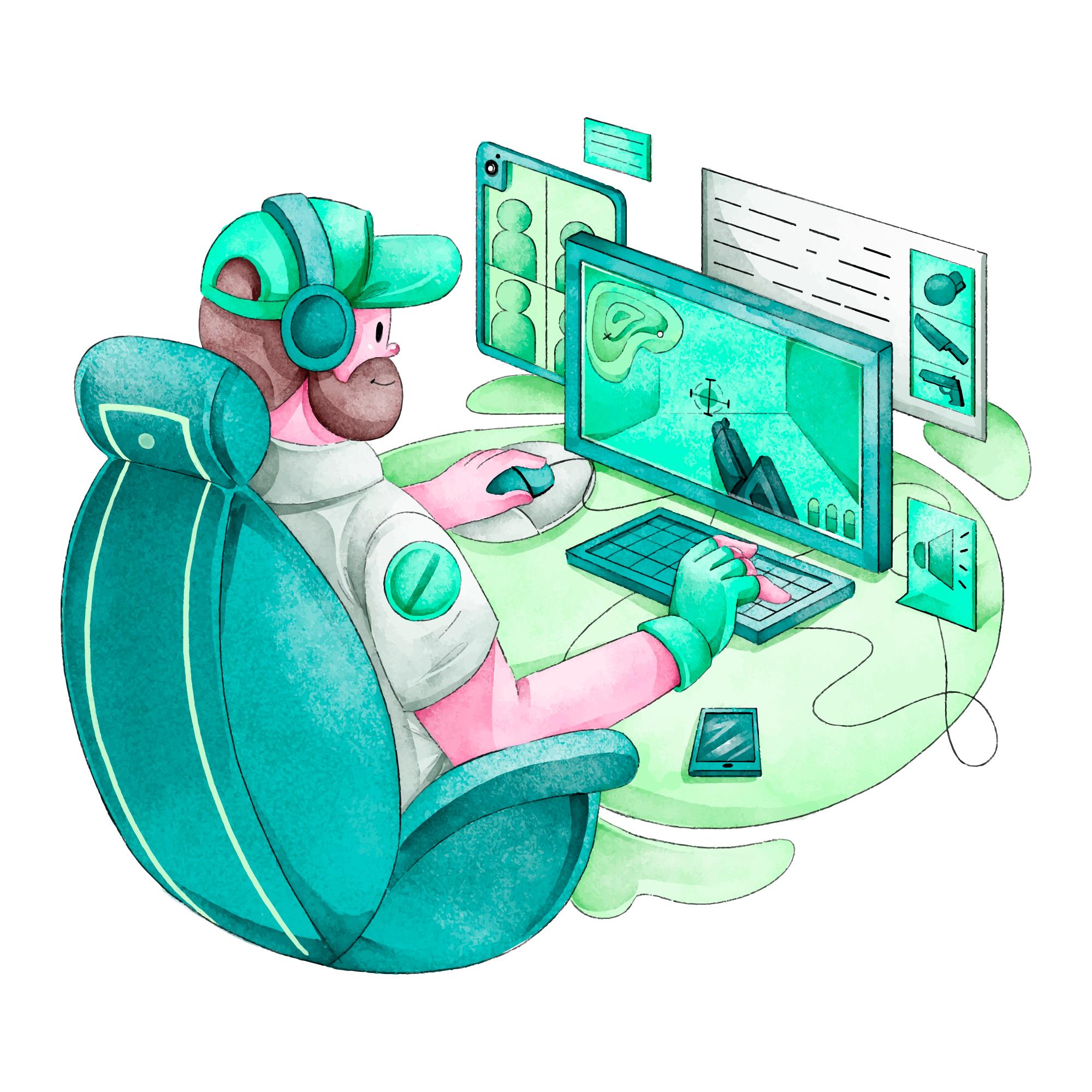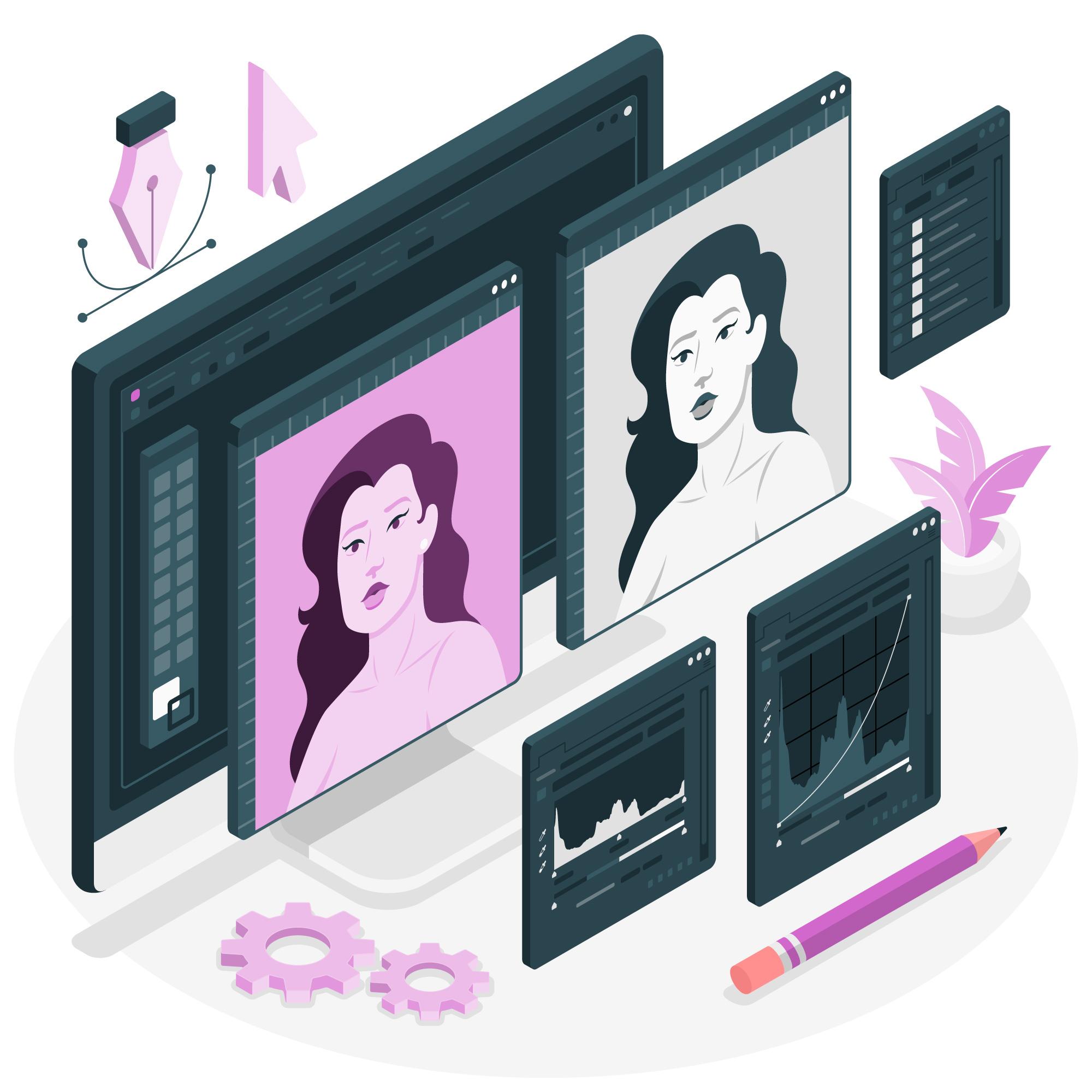An AI art generator is a tool that lets people create pictures using artificial intelligence. You type a few words—like “a cat riding a bike”—and it makes an image based on that idea. This is called generating AI art. These tools, known as art AI generators, can make anything from simple drawings to images that look like real photos.
The AI learns by looking at millions of pictures. It remembers patterns, shapes, and styles. Then it uses that to make AI-generated art that feels human-made. You don’t have to draw anything. Just write what you want, and the AI builds it for you.

How Does an AI Art Generator Work?
To understand how an AI art generator works, think of it like this: it learns from a huge pile of pictures and the words people use to describe them. Over time, it finds patterns, like knowing that a dog usually has fur, a tail, and four legs. When you type a prompt, the tool reads it and tries to match your idea to what it learned. This is how art-generated AI brings your words into images.
Let’s say you type, “a panda eating ice cream.” The AI reads each word. It knows what a panda looks like and what ice cream usually means. It mixes these ideas together in a smart way to use AI to generate art that fits your request.
These tools use a model, often trained on millions of images, which helps them guess what something should look like. It doesn’t copy pictures, it builds new ones based on everything it has seen before. This process takes just a few seconds. What you get is a brand-new image that has never existed before.
Some platforms let you add extra settings. You can choose if the style should look like a painting or a photo. You can even pick whether the picture should be colorful or black and white. This lets users guide the AI more closely. But even with simple text, it still creates something that looks planned.
There are many types of AI tools, from web tools to mobile apps. If you want an AI app that creates art, there are plenty available where you just type and click “generate.” It’s that easy. No drawing skills needed. You just need an idea. The AI takes care of the rest and gives you the final image to enjoy.
Make Art with AI: What to Know About Image Generator Tools
AI art tools are becoming more common. They help people create pictures without needing to draw by hand. Whether you’re an artist or just someone who enjoys trying new tech, these tools can be fun and useful. You type an idea, and the software makes a picture from it. Many use advanced AI art generator models trained on tons of images, which means they’ve “seen” a lot and can guess how to build something new.
You don’t need a powerful computer to use them. A mobile AI art generator lets you do it right from your phone. Some are apps, others run in your browser. And yes, it works even if you don’t know anything about art. Here are some main things to know about this type of software:
-
Text-based prompts. You type what you want to see—like “a tiger in a space helmet”—and the tool builds an image from those words. You don’t need special skills. Just type your idea and let the tool do the work.
-
Style choices. Most tools let you choose a style. Want something that looks like a painting? Or maybe something that feels like a comic book? You can guide how the picture will look.
-
Fast results. You won’t wait long. After entering your idea, you usually get your image in less than a minute. Some tools even let you try again and again until you like what you see.
-
Custom options. You can change things like the size of the image or how detailed it is. Some tools let you add effects or even remove things you don’t like from the picture.
-
Easy sharing. Once your picture is ready, you can save it or post it online. Many tools have sharing built in, so you can send your image to friends or social media with one tap.
-
Wide tool range. There’s not just one AI program that makes art. There are many—some free, some paid. Each has its own style and features, so it’s good to try a few.
AI art tools make it easier for everyone to create. No drawing tablet. No art class. Just an idea and a few clicks.

How to Build an AI Art Generator from Scratch
So, you want to make your own AI art generator? Good idea. These tools are everywhere now. People use them to create fantasy images, fun selfies, or even posters. Some apps can turn yourself into AI art, while others focus on style or speed. If you're thinking of building your own, here’s a simple way to understand the full processб from idea to app launch.
Before You Build: Pre-Development Stage
Every good project starts with a reason. Before you write a single line of code, figure out what your app will do. Do you want a tool that makes portraits? Abstract art? Something fast and fun or deep and detailed?
You also need to check what’s already out there. Study the most popular AI art generation tools. Look at what users love and what they complain about. If you want to create your own AI image generator, it has to stand out. Even one small feature—like special filters or fun styles—can make a difference.
Also, think about your audience. Are you building for artists? Teenagers who want fun profile pictures? Businesses who want quick designs? Knowing your users helps shape the whole app.
Planning the AI Art Generator App
Once you know what you want to make, it’s time to plan. Write out the features. Will your app support mobile? Web? Both?
A clear plan helps avoid messy code and big mistakes later. Ask yourself:
-
Will users type text to make art?
-
Can they upload photos?
-
Will they need an account?
Also decide if you’ll use pre-built models or train your own. If you’re working with an AI automation agency, they can help guide you here.
Don’t forget to sketch your app’s look. You don’t need a perfect design yet, but get a feel for how things will look. A few wireframes are enough.
Technical Side: What’s Under the Hood
This is where it gets more serious. If you want to create your own AI image generator, you'll need a few key things:
-
AI Model. You need a model trained to generate art. Many developers start with open-source models like Stable Diffusion. These models are already trained on thousands of images, so you don’t have to start from scratch.
-
Backend. You’ll need a strong backend to run the model. Art generation can be heavy on the system, so you’ll need cloud support or powerful local servers.
-
Frontend. This is what the user sees. It should be clean, simple, and fun to use. If you’re offering a mobile AI art generator, make sure it runs smoothly on phones.
-
Extra Features. Want users to turn themselves into AI art? Then you’ll need tools that can handle photo uploads, facial detection, and style transfer.
-
Storage and Speed Art files can be big. You’ll need a place to store them and tools to keep the app fast. Users won’t wait five minutes for an image.
Building the App: Step by Step
Now, the real work begins. Start by connecting your AI model to your backend. Then, link that to your frontend. Test everything. Does the image match the prompt? Does it work on all devices? Add key features one by one:
-
Prompt input
-
Style selection
-
Image preview
-
Download and share
Testing is important. Try different prompts. Use weird ones. Break it on purpose. Fix it. Then test again.
Launching and Marketing the App
You’re done building. Now it’s time to show the world. Before launch, do a soft release. Let a few people try it first. Friends, family, maybe a small online group. Get feedback. Fix bugs. Then launch publicly.
Now the hard part: getting people to use it. Start with social media. Show off what your app can do. Post fun examples. Invite people to try it and turn yourself into AI art. Give it a simple name that’s easy to remember. You can also reach out to artists, tech bloggers, or YouTubers who talk about AI tools. Many love to test new things and share them.
Keeping It Going: Maintenance and Updates
Your work doesn’t end after the launch. Apps need care. Fix bugs quickly. Keep an eye on speed. As more people join, you might need better servers. Listen to users. Add features they ask for. Maybe they want new styles or better filters. Even small updates show you care.
Watch trends. If other AI art generation tools are doing something new, think about adding something similar—or better. Keep your app fresh. And don’t forget to have fun with it. If you enjoy building and growing the app, your users will enjoy using it too.

5 of the Best AI Art Generators to Try Right Now
AI art is more popular than ever. People use it to make portraits, fantasy scenes, album covers, and even memes. You don’t have to know how to draw. All you need is an idea and the right art generator app.
1. Midjourney
Midjourney is one of the most talked-about tools in the AI art world. It runs through Discord, not a regular app or website. You type your prompt into a chat room, and it sends back a picture. The style is bold and artistic. People love using it for sci-fi, fantasy, or moody scenes.
You can refine the images, upscale them, or get more versions with a few clicks. You need a paid plan to get regular access, but many say the results are worth it. It doesn’t feel like stock art—it feels like someone painted it.
2. DALL·E 3 (by OpenAI)
DALL·E 3 is easy to use and works inside platforms like ChatGPT or Bing. You just describe what you want, and it makes it. The results are clean and creative. You can also edit the images by clicking on parts and changing them.
One good thing about DALL·E 3 is that it tries to follow your prompt closely. If you ask for “a panda in a yellow hoodie reading a newspaper,” it gives you just that.
It’s great for beginners and doesn’t need any setup. Some platforms may require an AI API key to connect the model, especially if you want to use it in your own app.
3. StarryAI
StarryAI is a mobile and desktop art generator app that’s very beginner-friendly. It lets you choose between two main modes—one for abstract art, one for more photo-like results. You can also pick different styles, set image size, and even change how long the tool “thinks” before giving you the image.
One cool thing here is you keep full ownership of your creations. This is great if you want to sell prints or use the art for business. They also have an app that works well on both Android and iPhone. So you can create from anywhere, even when you're bored on a train.
4. Artbreeder
Artbreeder is different from most tools. Instead of typing a prompt, you move sliders. Want a face with bigger eyes? Move a slider. Want it to look more like a painting? Adjust the setting.
It’s a mix between AI art and old-school photo editing. You can also blend two images together—like mixing a fox and a human face—to get a strange hybrid. It’s fun to play with, especially for making avatars or fantasy characters. If you’re building your own tool, Artbreeder has a feature where you can request access to their AI API key, which lets you build on top of their system.
5. Fotor AI Art Generator
Fotor started as a photo editor, but now it also has AI art tools. You type in your idea, choose a style, and wait a few seconds. It’s simple and quick. The results are bright and clean, good for social media, blogs, or casual fun.
Fotor doesn’t require a login for simple tasks, but if you want more features or faster image speeds, you’ll need an account. It’s not as deep as some others, but for fast, pretty images, it works well. It also lets you make art directly from photos, which can be useful if you want to turn yourself into AI art with just one picture.
There’s no single answer for the best AI art generator app. It depends on what you want to do. If you like full control, Artbreeder may be your thing. If you want stunning images in minutes, Midjourney or DALL·E 3 is a strong pick. Want to build your own tool? Go for one that offers an AI API key. Either way, AI art is no longer just for coders or pro designers. Anyone can use it now. You just need a spark of an idea—and the right tool to bring it to life.
The answers to your questions
What is the best AI art generator?
It depends on what you want. Midjourney is great for creative styles. DALL·E 3 is simple and easy for beginners. Try a few and see which one feels right for you.
How to use an AI art generator?
Type in a short description of what you want to see—like “a cat dancing on the moon”—and hit generate. Some tools also let you choose a style or size. Then just wait a few seconds for your image.
How to make an AI art generator?
You need an AI model, a backend to run it, and a simple interface for users. Add options like style or size, connect it all, test it, and you’re good to go. It takes time but it's doable.
How to train an AI art generator?
You feed the AI lots of images with matching text so it can learn how things look and what words mean. Over time, it gets better at guessing what kind of picture to make. It's a long process and needs strong hardware.
